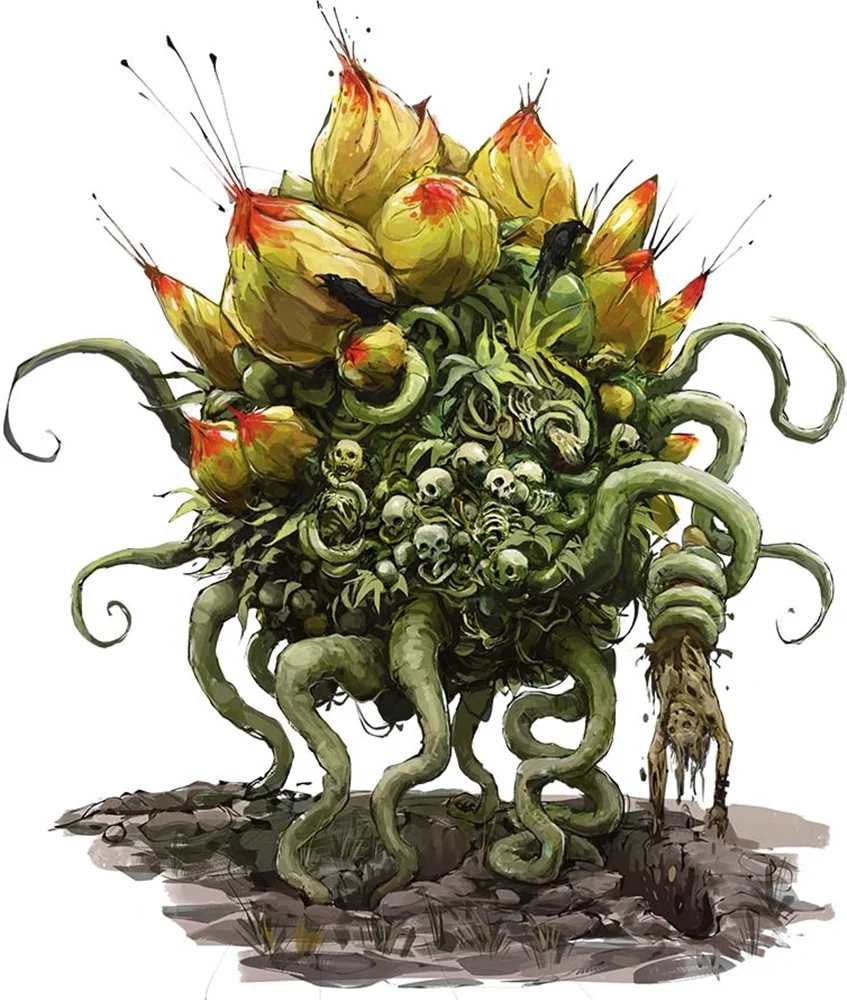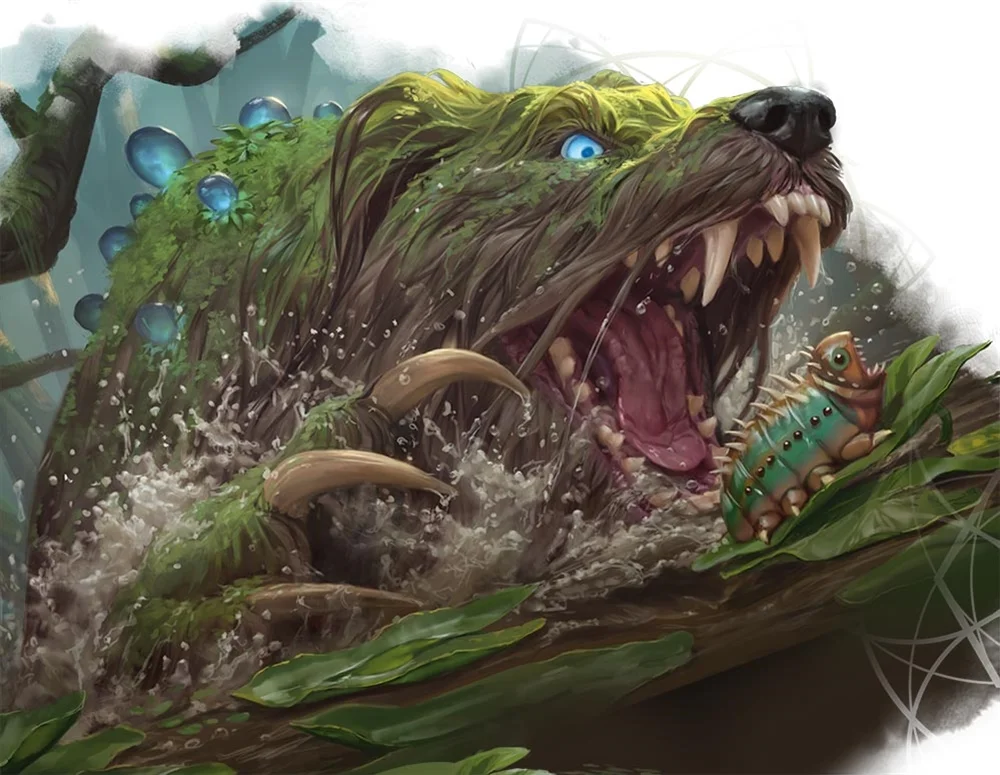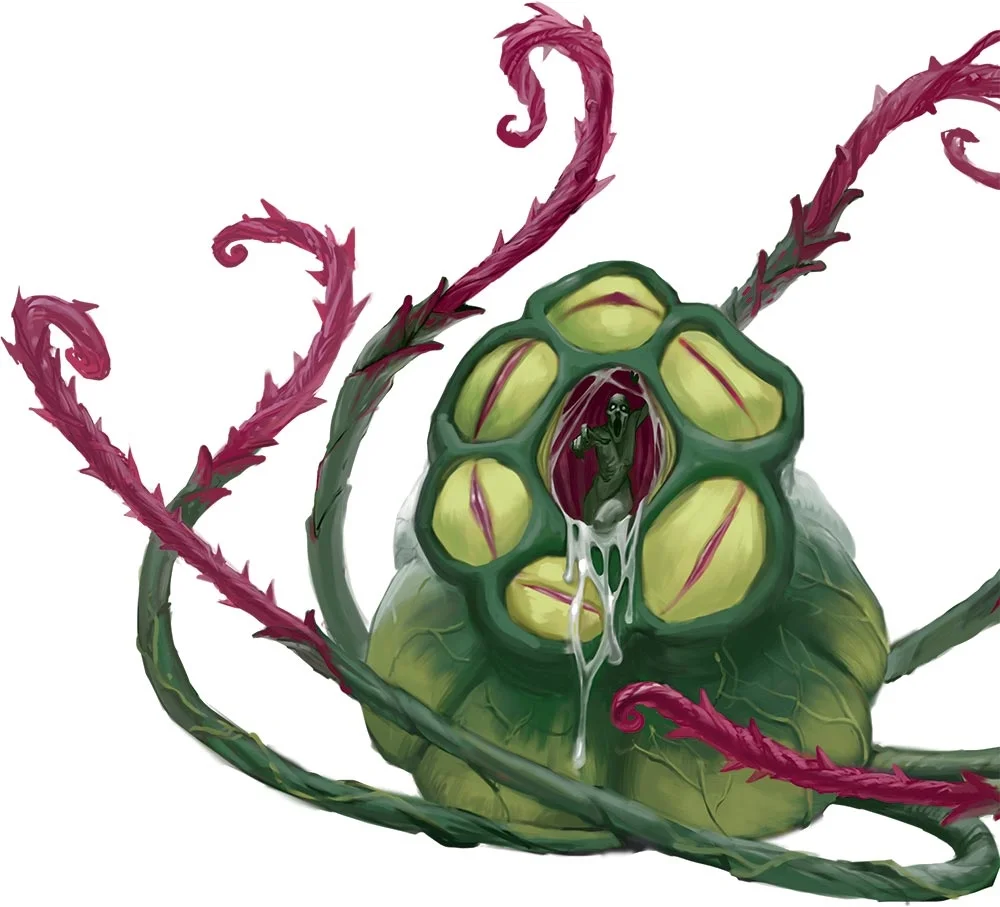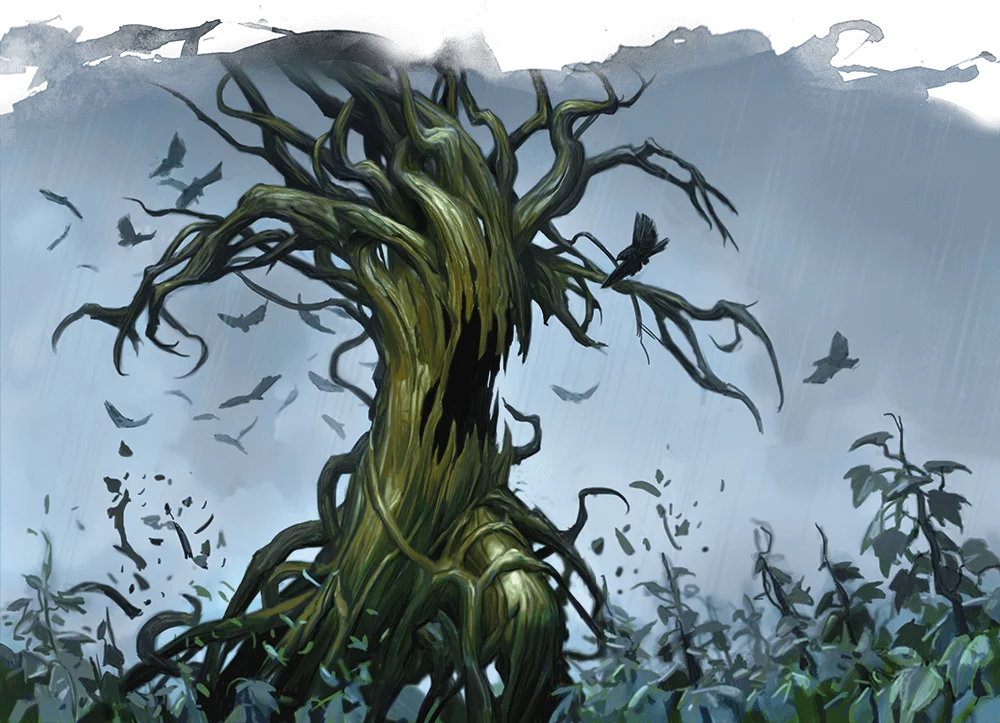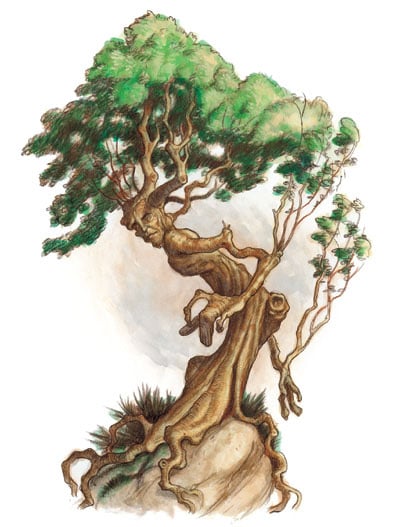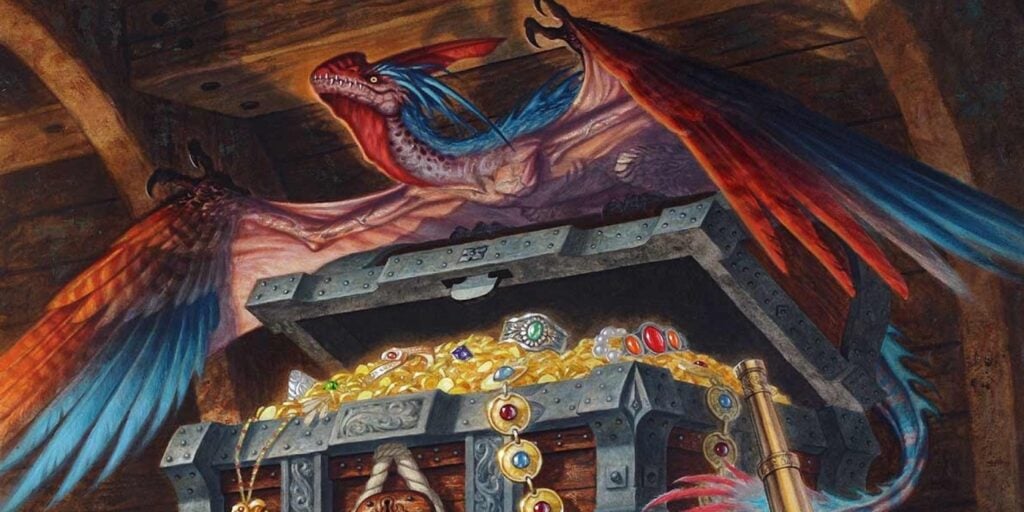D&D: The Five Deadliest Plants, Because Nature is Trying to Kill You
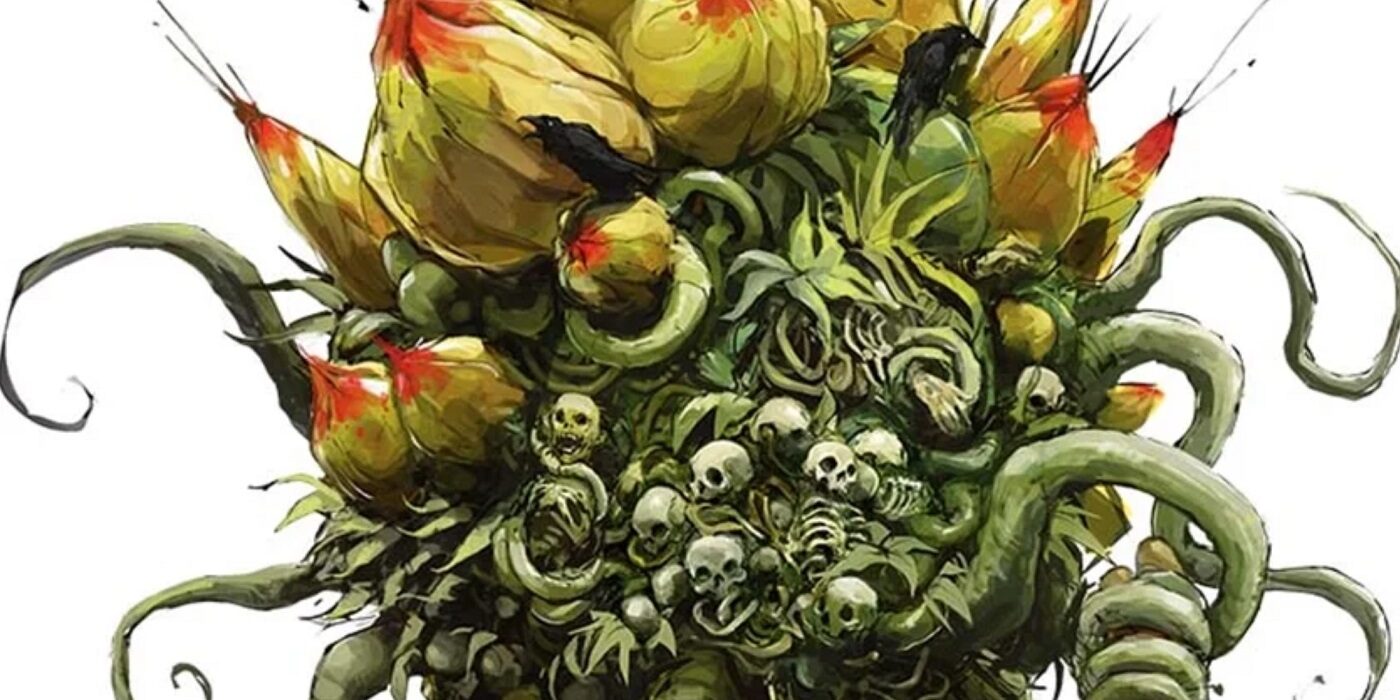
Are plants trying to kill you in real life? These D&D plant monsters will carry the histaminic torch to your tabletop.
Allergy season is nature’s way of reminding you that no one can escape from Earth’s omnipresent grasp. And while our real world may be full of plants that will merely try to kill you by sending your sinuses to the Phantom Zone, in D&D, the plants are even deadlier.
Strangling vines. Poison toxins. And a surprising number of plants that can do stuff with your dead body and the dead bodies of your friends. At any rate, there are plenty of flora out there who would happily devour a whole party of adventurers. And from among them, these are five of the deadliest plants in D&D.
Corpse Flower
The Corpse Flower, as the name suggests, feasts off of the corpses of those it slays and those slain around it. These creeping, crawling plants are capable of hanging from the ceiling as well as walking along the ground. They make use of the corpses they contain, holding up to nine different bodies at once. These dead bodies give the corpse flower a tremendous stench, poisoning any who happen to be near it or one of the zombies under its control.
As a bonus action, it can turn one of the corpses within into a zombie, meaning suddenly the fight can be enhanced with up to nine extra combatants. But on top of that, it can devour a corpse, to heal itself (or rob the party of the ability to easily resurrect the dead body, particularly troublesome if one of the party members should fall). All this, plus poisonous tentacles make the Corpse Flower deadly indeed.
Groff
Despite what appearances suggest, a Groff is actually a plant. Though it has a strange canine-like face, a Groff is mostly moss and snapping twigs. They are particularly deadly because of their perfect disguise. They can submerge themselves in a swamp, appearing as an ordinary moss-covered bog patch.
Until they strike. And when they do, they can be quite dangerous. Their bite isn’t too bad, dealing a paltry amount of damage, but what makes them deadly is their swamp claw attack.
When striking a creature with its claw, a Groff immediately engulfs the target, rendering it unable to breathe, and dealing recurring poison damage at the start of each of its turns. The Groff can carry off an engulfed target, suffocating it as it swims away. Unless the target is particularly damaging, a pack of Groffs could separate a party entirely, picking them off one by one.
Bodytaker Plant
Bodytaker plants are positively malicious. They are invasive in the extreme, taking the opportunity to not only prey on individuals but whole societies. Their whole deal is taking over and subverting towns or villages by infiltration.
As the name suggests, bodytaker plants are good at taking bodies. A single bodytaker can lash out with entangling vines, grappling and restraining targets and pulling them into its entrapping pods. Once the target has been enveloped, it is only a matter of time before it dies, becoming stunned and exhausted until the plant-sapping enzymes can digest it and convert it into a living podling.
Podlings are plantlike versions of the creatures they grew from. They possess the previous target’s memories and behaviors, with only an occasional lapse. It is a difficult proposition to see through to the true nature of a pod person, which means you might be among them even now.
Tree Blight
Tree Blights are found in the hills of Barovia. These huge, shambling trees move surprisingly quickly. And can sense creatures out to sixty feet with its strange blindsight. But what makes a tree blight deadly is its ability to lash out with many attacks all, necessarily focused on a single target.
First, it hits with a branch, then an entangling, grappling vine, and then finally it can deliver a bite to grappled targets, allowing it to deal scads of damage while also keeping the targets pinned where they’d like.
Especially because a tree blight has a reach of 15 feet with its grapple attack. It could potentially pin a party in place, unable to reach it to destroy it unless they can fight their way free of its gnarled roots.
Treant
Finally, the original D&D plant monster, the treant. Treants are by and large typically good. Though there are the very rare, very occasional evil treants. Facing down a treant is a terrifying prospect. They are lords of the forests for good reason. Not only can they hit with powerful branches, but they can hurl rocks as giants can, and they have the ability to animate two more trees within 60 feet of them, suddenly tripling their strength since these awakened trees have the same stats as a treant.
Suddenly fighting thrice the foe makes a treant one of the deadliest plants in D&D.

